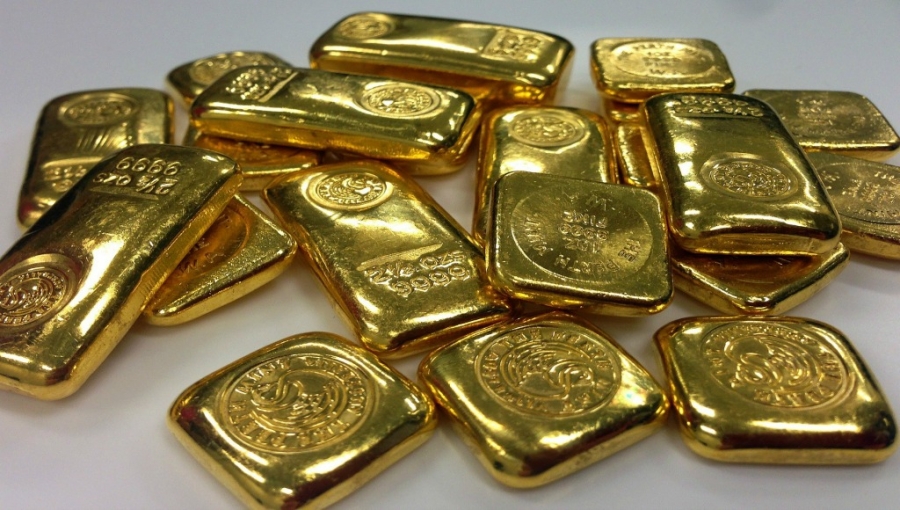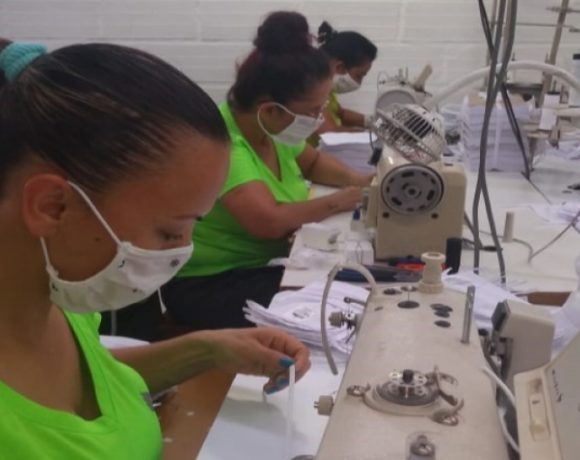USAID, European Buyers Team-up on ‘Better Gold Initiative’

The U.S. Agency for International Development (USAID) announced October 18 that it’s teaming-up with European-based gold buyers to promote environmentally, economically and socially responsible gold mining in Antioquia specifically and Colombia generally.
Noting that gold production in Colombia is up year-on-year — and development projects underway are expected to triple output — USAID nevertheless cited discouraging statistics indicating that only 12% of Colombian gold currently is produced safely and legally.
But new projects such as the European “Better Gold Initiative” (BGI) spearheaded by the Swiss Better Gold Association (SBGA) and the Swiss Secretary of State for Economic Affairs (SECO) could help boost safe and legal production – while also bringing greater benefits to more miners, according to USAID.
Switzerland hosts Europe’s four biggest gold refineries, which produce an estimated two-thirds of global finished gold, the agency noted.
The BGI would complement the USAID-sponsored “Oro Legal” (Legal Gold) program, which aims to convert many small, artisanal, illegal miners to legal mining, according to the agency.
“We establish contacts between small producers of legal gold and the gold refiners,” explains BGI director Thomas Hentschel. “Once they agree on a price, we move to the export phase, and with partners in the supply chain we seek companies that pay a special price and offer an additional incentive of up-to-US$1,000 per kilo, which [miners] can invest in social infrastructure, technical assistance and technology to substitute for the use of [toxic] mercury,” Hentschel added.
BGI already works with certification organizations including Fairtrade, Fairmined and the Responsible Jewelry Council.
However, SBGA is developing a parallel gold-buying strategy that includes 16 criteria for mining responsibility — including environmental protection, labor rights, social responsibility and community relations.
Miners that comply with these criteria are considered “responsible gold producers” via a certification scheme that’s “less demanding and more flexible than existing certification systems,” Hentschel added.
In Colombia, the BGI scheme is already advancing toward certification with two companies in the department of Caldas, while BGI officials expect to see more miners in the Bajo Cauca region of Antioquia joining soon.
The goal is to achieve BGI certification and export of at least one tonne per year of qualified gold over the next four years, according to USAID.
Legal Gold More Profitable: USAID Study
Meanwhile, USAID noted that while Colombia has exported an annual average of 60 tonnes of gold in recent years, only 12.5 tonnes/year (20%) have been produced by legal miners. The other 80% of production by illegal miners fails to pay required royalties, taxes or obey environmental and labor-protection laws, USAID noted.
What’s more — contrary to popular belief — illegal miners lose between COP$18 million (US$6,000) to COP$30 million (US$10,000) per kilo of gold produced, compared to what they would earn via legal mining, according to a new USAID study.
The study examined a more-or-less typical illegal underground mining operation with seven employees working 25 days per month, extracting one kilogram of gold per 300 tonnes of rock mined each month.
That study employed baseline data including current international gold prices, the relative inefficiency of artisanal mining, the price paid by illegal versus legal gold buyers, and the relatively high price of mining explosives in the black market. Eliminating the high cost of illegal explosives would by itself cover much of the cost of converting to legal mining, the study found.
In the legal market, a package of “Indugel Plus” mining explosives including 154 sticks, 100 initiators and 200 meters of cord today costs about COP$700,000 (US$235), whereas the black-market cost oscillates between COP$2.5 million (US$830) to COP$5 million (US$1,600), the study found.
“With the money saved by buying legal explosives, miners could pay social security to their workers and make advances in environmentally responsible and safe mining,” explained Beatriz Duque Montoya, USAID’s “Oro Legal” coordinator.
Buyers of legal gold today pay miners 97.5% of the London gold reference price. But miners lacking certificates-of-origin get only 82% of the London reference price, the study found.
“If we assume that a small legal miner produces one kilogram of gold per month and the international reference price is COP$120,000 [US$40] per gram, then this miner would receive COP$117,000 [US$39] per gram or 97.5% of the reference price,” Duque said.
“On the other hand, the illegal miner would get, optimistically, COP$98 milllion [US$32,000] per kilo or 82% of the reference price. In a more realistic scenario, the illegal miner would obtain only 70% of the reference price, or COP$84 million [US$28,000] per kilo, which means that in the process of commercialization, the illegal miner would lose between COP$18 million [US$6,000] and COP$33 million [US$11,000] per month,” she concluded.
Besides losing money from illegal commercialization, the illegal miner also cuts net gold yield by using toxic mercury, the study found.
“It is proven that by using [mercury], losses of 40% to 50% of gold are realized,” according to the study. In contrast, when mercury-free processing is employed, then gold losses are only 8% to 15%, according to the study.
What’s more, if miners can achieve BGI certification, then they could earn a bonus up-to-COP$3 million (US$1,000) per kilo of gold — and if they further achieve Fairtrade, Fairmined or Responsible Jewelry Council certifications, then bonuses could rise to as much-as-COP$12 million (US$4,000) per kilo, the study added.
















